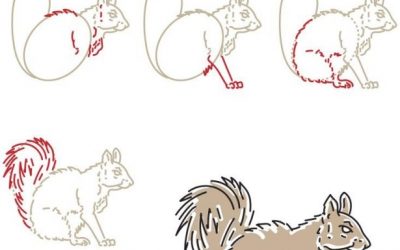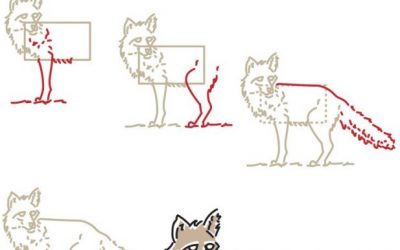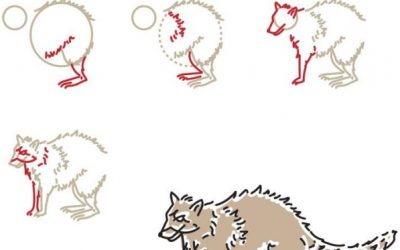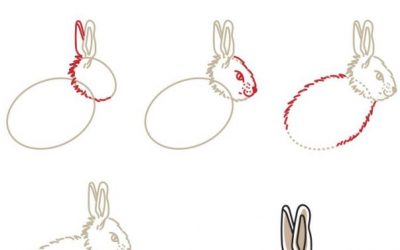
The beauty of drawing in graphite is that there is so little equipment needed. A piece of paper and just about any pencil is all that is necessary to get started. There is no mess from paint, water, turps or the like being spilt. To produce something better than just a sketch, it is just a matter of taking one’s time.
My style of drawing requires patience, and drawings can take many hours to complete. But it’s really up to you – work at your own pace and precision to get the results you want.
I use smooth watercolour paper so the detail will show on the finished drawing. It is secured to a sheet of Masonite which has a hard, white surface that does not retain the impressions of previous drawings. I usually use three grades of lead (2H, HB and B); but sometimes use softer leads down to 8B where a blacker result is required. I prefer clutch pencils, although I also use conventional wooden pencils. To prevent smudging, I rest my hand on a small board with strips under opposite ends to lift it to around 5mm clear of the paper … So my hands never touch the paper. For fine botanical work, I use head mounted magnifying lenses. I work with the paper flat on the desk and with a good light.
MATERIALS
• Reference photographs.
• A3 sheet of Arches Watercolour Smooth 185gsm paper. Clutch pencils with 2H, HB and B leads.
• Eraser.
• Masonite backing board.
• Hand-rest board.
• Adjustable callipers.
• Micador Spray-on Fixative.
• Magnifying glasses (optional).
STEP ONE
I faintly drew the major parts of the carriage onto the paper with a 2H lead, paying particular attention to the wheels. These were the most difficult part of the drawing and many changes were made before I was satisfied. I used my adjustable callipers to locate the first wheel on the paper and to transfer just the major points of the carriage onto the sheet; and then drew the main lines of the carriage.
To improve the composition of the picture, I decided to add a person in the right foreground looking towards the carriage. I found a suitable photograph of one of my grandchildren and drew it to the correct scale on a separate piece of paper. After cutting it out, I was able to move it around on the drawing until I found the most suitable position and lightly drew around it.

STEP TWO
The whole of the carriage was then completed very faintly and checked for correctness. All the background was ignored at that stage, as it would be added later and modified to suit.

STEP THREE
I started to fill in the detail, once again starting at the two right wheels. It was at this stage that the final shape of the wheels was finalised. The carriage was basically all black, so careful variation of shade was required to prevent the finished result from becoming a black blob.
I used B grade pencil for the very dark parts. The resulting blackness was a combination of hardness of lead and the pressure used when applying it. The leads were sharpened to a fine point and allowed to wear a little for shading.

STEP FOUR
The remainder of the carriage and the small boy were finished off. As I am right-handed, I started at the top lefthand corner and worked down to the bottom right-hand corner. That way, the drawing was always in view and not under the hand board. I checked regularly to ensure that everything was in the correct position and not too dark. Attention was given to any variations in shade – as it is this that gives life and form to the drawing. Also, the sample picture of the boy was not facing in the right direction and was wearing inappropriate clothing; so these issues were modified. When completed, I visually checked the drawing again and sprayed it with fixative to prevent it getting accidentally smudged.


STEP FIVE
The background was drawn dark enough to be easily seen … but not dark enough to detract from the main subject. The accuracy of the background was not as important as the main subject, so it was done by eye. In the process some changes were made to improve the composition. I must admit that I soon lapsed into my usual style and really got lost in the detail; especially the trees. I think this is because I like drawing so much and love to see a good result from all my work. Much of this background was done with a HB lead which was allowed to become blunt. The pale, fuzzy lines were then possible; and, when needed, sharp lines were achievable too. There’s always a sharp edge somewhere on the lead – it doesn’t matter how blunt the pencil is.

FINAL STEP
Shadows were added on the ground to put the carriage into the picture.
After checking the finished drawing and making any minor changes necessary, I signed it and gave it a final spray of fixative.

MASTER HINTS AND TIPS
• It’s been said many times before … but practice really does improve your work.
• Carry an A5 digital diary and a pencil with you, so you can draw at any time.
• Draw what you see; not what you think you see.
• Look very carefully at your subject and take notice of the angles of lines, the relative lengths of lines; and compare the size of all the parts of the subject.
• Remember, the length and position of the first line on your paper determines the size of the finished drawing and the position of the subject on the page. Think hard before you draw this line. There’s nothing worse than finding that you cannot fit your drawing onto the sheet when you’ve been drawing it for several hours.
• Take your time, and don’t rush it.
• Remember you are drawing in black and white … so try to imagine the subject without colour. Often a brightly coloured subject doesn’t look as good without the colour.





